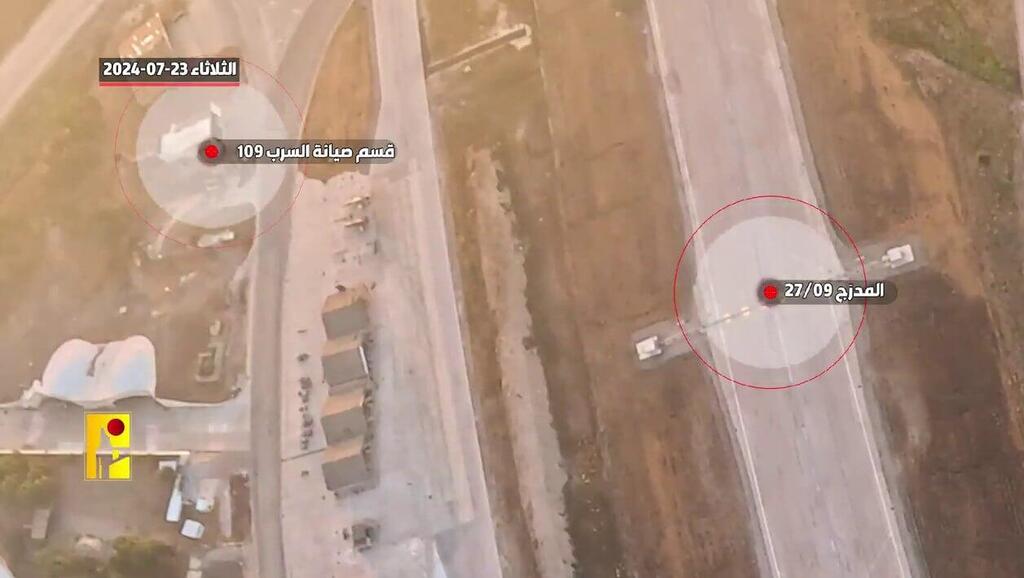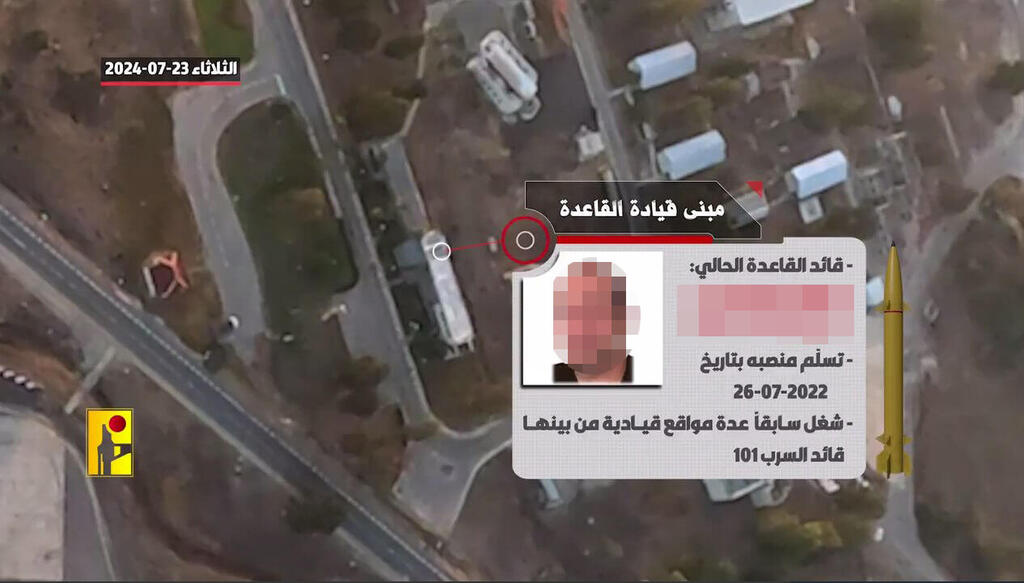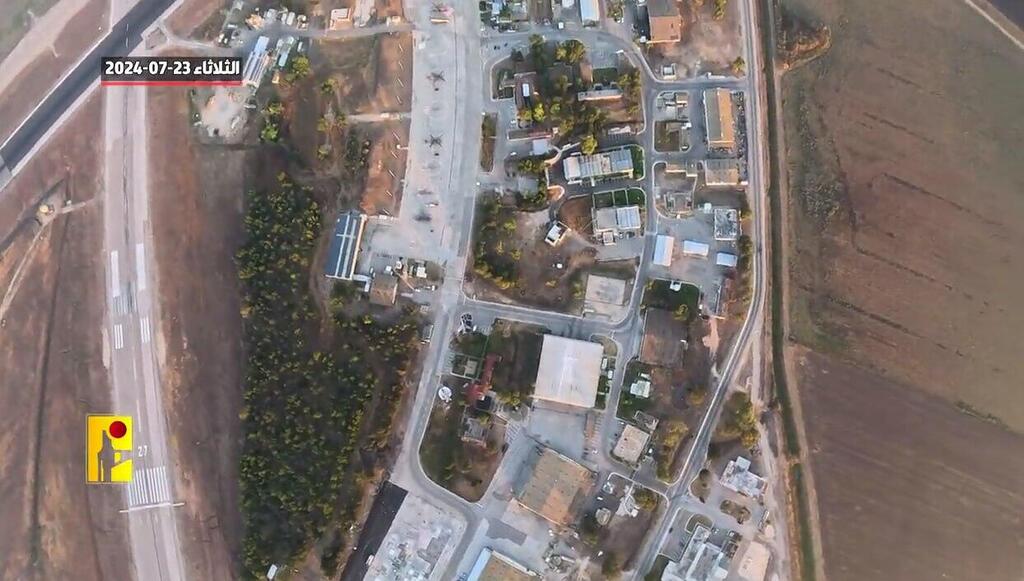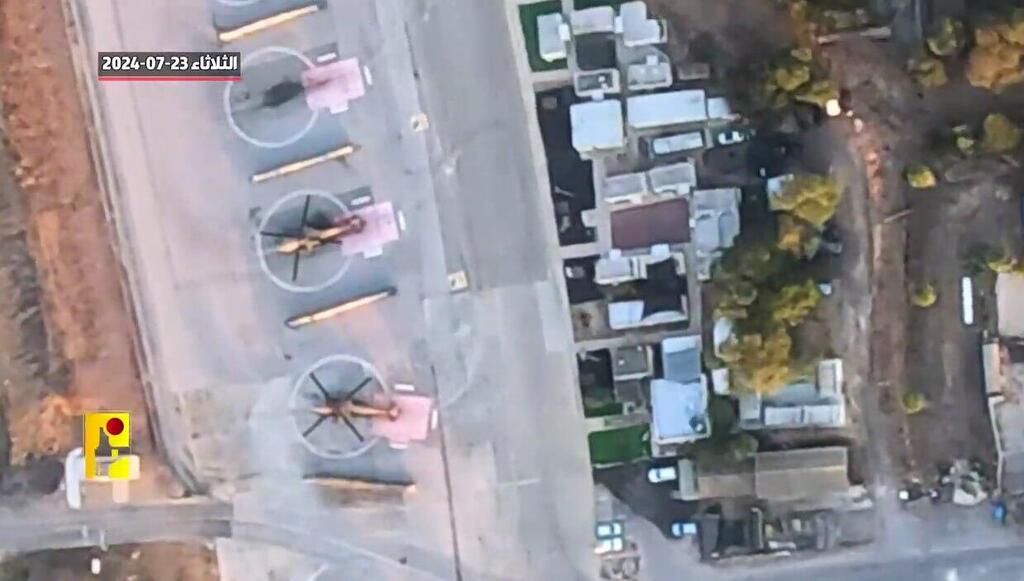Getting your Trinity Audio player ready...
Hezbollah releases drone footage of sensitive Israeli air base Ramat David
Hezbollah released drone footage on Wednesday showing Ramat David Air Base, located about 30 miles from the Lebanese border.
According to the Lebanese terror group, the footage was taken on Tuesday by its Hudhud drone, which has previously filmed in Haifa Bay and bases in the Golan Heights.
In the nine-minute clip, Hezbollah identifies various facilities visible in the footage, including fuel tanks for aircraft, the headquarters of the 109th Squadron, an Iron Dome air defense platform, ammunition depots, the headquarters of the 157th Squadron, hangars and the headquarters of the 105th Squadron.
The group also published a photo of the base commander's office, allegedly revealing his personal details and noting that he began his role in July 2022. Additional footage showed other warehouses and headquarters of the 101st and 160th Squadrons, as well as the technical area of the 193rd Squadron.
The video also includes images purportedly taken on July 9, featuring Apache helicopters, fuel storage and Hercules aircraft.
The IDF downplayed the Hezbollah footage, saying, "The video released by Hezbollah was filmed by an unmanned aerial vehicle solely for reconnaissance purposes. The base's operations were not affected. The IDF and the Air Force have been actively targeting Hezbollah's aerial capabilities, striking hundreds of targets in recent months. The Air Force will continue to use all means to protect Israeli airspace."
A Hezbollah source told Al Jazeera that the footage was taken on Tuesday and is related to Prime Minister Benjamin Netanyahu's trip to Washington but did not provide further details.
Hezbollah-affiliated network Al Mayadeen described the footage as "a clear message" following the Israeli attack in Yemen's port of Hodeidah over the weekend, claiming that this might be the first time in Israeli history that an Israeli military base's airspace has been breached. Despite high alert levels and Israel's expectations of attacks from Yemen, Hezbollah managed to send the drone and evade Israel's air defense.
In a previous video released by Hezbollah, the terror group detailed what it claimed to be Israeli intelligence bases, strategic electronic intelligence stations and facilities in the Golan Heights capable of conducting electronic attacks in the north. Hezbollah described these as "the eyes of the state."
The video also purportedly showed military outposts, Iron Dome batteries and concentrations of IDF forces during the war. Additionally, the video included footage of buses that Hezbollah claimed were used to transport officers and soldiers in the north, as well as a "new military medical center." Unlike the recent release, Hezbollah did not specify when this footage was taken.
In the initial video, Hezbollah included additional clips recorded by its drones, featuring naval vessels at the Haifa port, neighborhoods in nearby cities, the Big shopping center, a facility of arms manufacturer Rafael and surveillance of a moving vehicle. According to Hezbollah, the drone returned to Lebanon without being intercepted.
American officials speaking to CNN expressed concerns that, in the event of a war with Hezbollah, Israel's air defense systems—including the Iron Dome—might not withstand Hezbollah's "vast arsenal of missiles and drones," potentially "overwhelming it."
CNN referenced the Hezbollah video, which captured sensitive sites in Haifa and nearby cities, and reported that Israeli officials told the U.S. they believe the Iron Dome could be vulnerable—especially in the north—due to the sophistication expected in Hezbollah's attacks during a potential wider conflict.
Two American officials indicated that the Israelis were surprised by the precision demonstrated by Hezbollah so far. The primary concern is that Hezbollah might use a large number of advanced weapons and precision-guided missiles simultaneously in an attack, potentially overwhelming Israel's air defenses.










